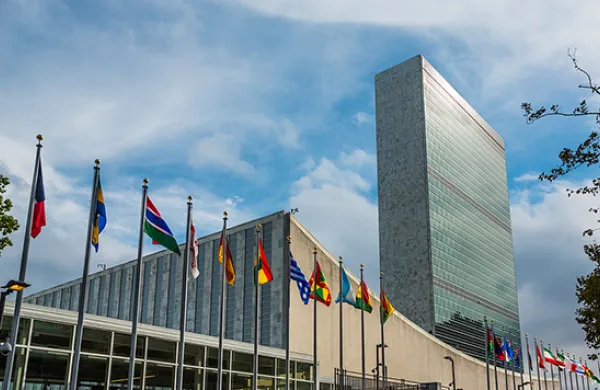Roughly 25 years ago, one of the most far-reaching events in the history of development finance occurred: Foreign direct investment from advanced economies into the developing world overtook traditional aid.
The milestone passed without fanfare, but it was profoundly important. It meant that multinational companies and institutional investors were finally recognizing emerging markets as places in which they could make money, rather than places that needed money.
The past quarter-century has seen significant progress in reducing extreme poverty and meeting basic human and social needs, yet daunting challenges remain in realizing the Sustainable Development Goals that world leaders adopted at the United Nations last September. Nearly 2.2 billion people still live below the $2-a-day poverty line; three quarters of them live in growth markets like China and India that today rank as middle-income nations.
Building better lives for all will require trillions of dollars, and aid funds alone will not suffice. For the way forward, we must look to the private sector. Put simply, private and institutional investors have the capital; donor governments do not, especially as they grapple with fiscal constraints and the burgeoning costs of supporting aging domestic populations.
Institutional investors currently hold about $1 trillion in dry powder, funds that could be deployed profitably toward sustainable solutions to today’s global challenges. Only by directing those resources into commercially viable investments will the global community be able to remove the obstacles to promoting broader prosperity — from climate change and water shortages to lack of education and unequal access for women to jobs.
To fully unlock those resources, though, private investors often need a helping hand from the public sector. Pairing private investors and operating partners with public development finance institutions is, in my view, one of the most scalable solutions to tackling many of the challenges facing the developing economy. Such DFIs as the Overseas Private Investment Corp. in the U.S. and the U.K.’s CDC Group, as well as multilateral agencies like the World Bank’s private sector lending arm, the International Finance Corp., can provide crucial loan guarantees or risk-mitigation support along with financing. By partnering with such agencies, the private sector — often led by private equity firms — has modernized ports and railroad systems, built power plants and financed the construction of hospitals and schools.
This partnership capital model is a win-win-win. It transforms lives, entails minimal cost to taxpayers and yields profits. For example, a child in rural East Africa can now do her homework at night under a lightbulb powered by an affordable solar kit from M-KOPA, a Kenyan company backed by private equity and development finance. In the past, state-directed electricity programs financed through taxes and foreign aid took years to reach villages, if at all.
For all the promise of this approach, foreign aid continues to dominate the conversation about tackling the world’s challenges. When confronted with a new problem, policymakers too rarely ask, What is the least amount of public funding we can use to mobilize the maximum amount of private investment to address it? This is an enormous missed opportunity. Most DFIs are self-sufficient: They operate at no net cost to taxpayers. They are, in effect, development that pays for itself. Yet most countries still devote far fewer resources to their DFIs than to their aid agencies.
According to one conservative estimate, between 2002 and 2013 (the last year for which comprehensive figures are available) the total amount invested by DFIs grew from $10 billion per year to $67.9 billion. This amount is still considerably less than the $119.6 billion in aid (excluding aid to refugees) that flowed in 2015 from members of the OECD Development Assistance Committee, which includes 28 big donor countries and the European Union.
Policymakers have yet to grasp fully the tight linkage between what DFIs do and what foreign direct investors and investment funds are willing to do. Without the assistance — and, frankly, the push — of DFIs, many commercial investors would not have felt comfortable in pioneering activity in sectors and markets where it was needed the most. Meaningful progress in addressing some of the world’s most difficult economic and social challenges has been achieved in this manner, from supporting the advancement of women entrepreneurs in India and Ecuador to expanding access to health care in Ghana.
There is no doubt that foreign aid and philanthropy will continue to have an important role in development, as they have in fighting infectious disease in Africa, for instance. But rather than creating initiatives that depend on short-term political or financial support, more decision makers should deliver solutions that are independent, accountable and diversified across public and private sources and are financially self-sustaining.
Many mind-sets still need to change to unleash the full potential of partnership capital. We need to embrace and scale this approach so as to mobilize more development finance capital alongside the allocations institutional investors intend to commit to growth markets. If we succeed, we could witness an extraordinarily different landscape, one that is characterized by profound social and economic inclusion in the world of tomorrow.
Arif Naqvi is founder and chief executive of the Abraaj Group, a Dubai-based private equity firm that invests in the growth markets of Africa, Asia, Latin America, the Middle East and Turkey. He is a member of the board of the United Nations Global Compact and a commissioner of the recently formed Global Commission on Business and Sustainable Development.






